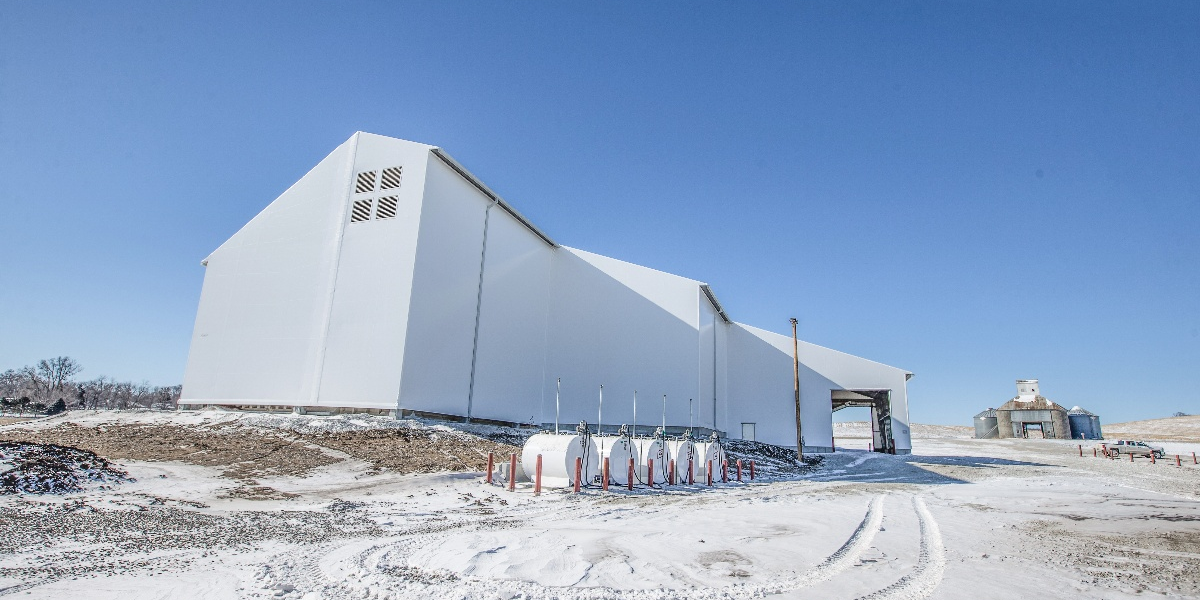Flat Grain Storage Buildings

Fabric Buildings are Cost-Effective and Highly Protective
Fabric structures can be a great choice for flat grain storage purposes. They are less expensive and easier to install than buildings made of more traditional materials such as steel, provide superior protection for the grain, and they can easily be converted for other uses when they are not storing grain.
Fabric Structures are a Better Value
Flat grain storage has quickly become a common method of storing grain, rather than the traditional way of keeping grain-raised structures specially designed for storing grain. Flat buildings, on the other hand, can be used for different purposes when not in use to store grain, such as storing machinery or livestock. Because the building can serve several different purposes, it is far more useful than a structure that can only contain grain, therefore providing more value. Because it can also be used for different things, there is a purpose to having extra buildings, which can then serve as extra space for grain storage in case of a large harvest.
Inexpensive and Flexible
A fabric structure is less costly than a steel structure, but still provides the strength that is required of a structure to contain grain, as well as the capacity to store large amounts of grain. Legacy fabric structures are also highly customizable in their layout and shape. The process of erecting a fabric structure also can be done much faster than building a steel building, and a fabric building can be moved if necessary, which can be very convenient.
Fabric Structures Provide Superior Protection to Grain
Unlike a steel building, which is held together with screws and therefore has holes and places where moisture can leak in, a fabric structure is weather-tight. This is a huge benefit of using a fabric building for flat grain storage, as moisture and mold can ruin a grain harvest. The ventilation of a fabric structure helps to keep air fresh and moisture levels from building up, and without moisture, mold can not grow in the grain. Temperatures in a fabric structure are also more moderated than in a steel structure, with it staying cooler in the summer and warmer in the winter. A fabric structure also is easy to clean and prepare for grain storage. It is harder for rodents and birds to find a way to enter, which is important as vermin can contaminate the grain. Also, rust can be a large concern in a steel building, as it degrades the metal and allows leaks, but rust is not an issue in a fabric structure.
Flat grain storage in a fabric structure can be the perfect solution if you are looking for a cost-effective way to store your grain harvest, while keeping your mind at ease that it is safe and protected against the environment.
Subscribe to our Blog
Recent Posts
- 5 Factors Every Project Owner Should Consider Before Approving Building Materials
- The 20-Year View: How Material Choices Impact Long-Term Operational Costs
- Climate Resilience in Commercial Construction: Why Traditional Methods May Not Be Enough
- Speed and Quality: The Role of Hybrid Building Materials
- Beyond the Bleachers: Designing Visually Striking Sports Facilities
